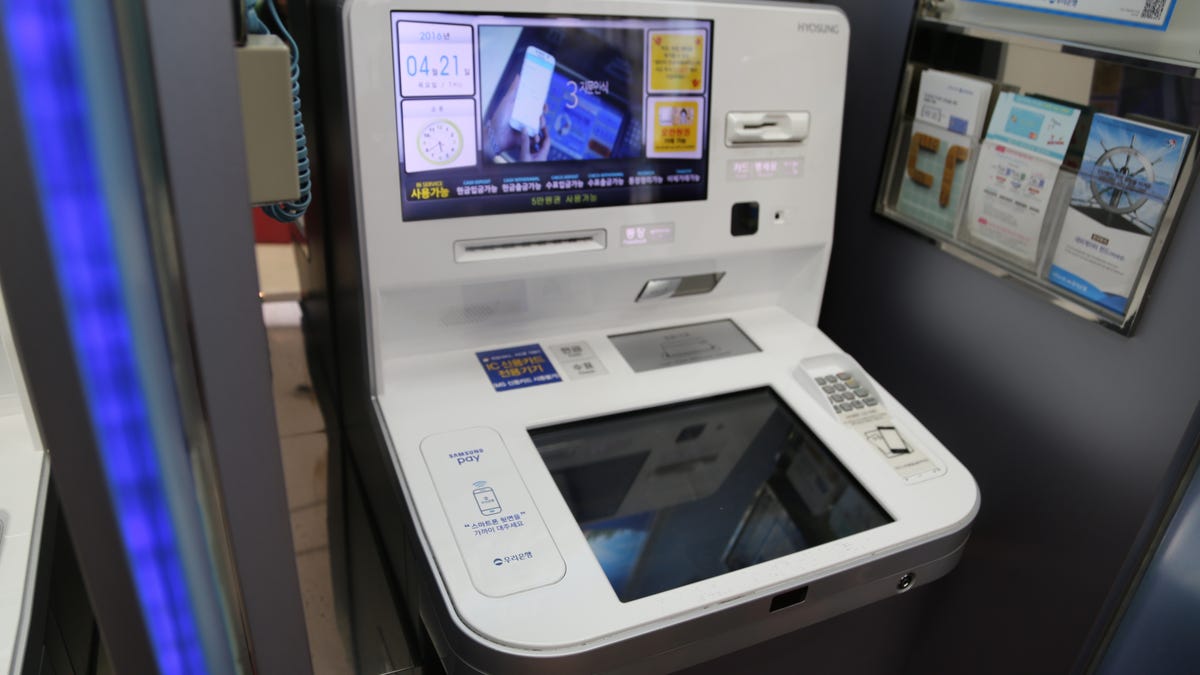Forget debit cards. This is how you'll use your phone at the ATM
US banks like Chase, Wells Fargo and Bank of America are rolling out cardless payments that let you tap your phone to do your banking -- and we got a demo. Cha-ching!

Engaging in ATM transactions using your smartphone instead of your debit card is right on the money for a world where the phone in your hand is increasingly the key to the physical space around you.
And we aren't necessarily talking about mobile banking apps, either. We're talking about tapping the phone to a specific place on the cash machine itself in order to start a session. Bank of America, Wells Fargo and Chase are three US banks that are in the process of rolling out the technology, or planning to soon.
CNET demoed cardless withdrawals at one of the San Francisco Bay Area's 650 compatible Bank of America ATMs. (Although these particular machines won't accept cardless deposits yet, the functionality is possible, and could be added down the line.)
By the end of May, 2,400 Bank of America ATMs will include the tech, a number that will expand to 5,000 ATMs (out of 16,000 ATMs nationwide) by the end of the year. Wells Fargo's own system will climb on board over 40 percent of its ATMs by the end of 2016, it told CNET, and Chase bank plans to launch similar ATMs; keep an eye out for the first ones before 2017 rolls around.
How it works, and what it won't do
Banks are experimenting with two different ways to use the ATM without a debit card in hand.
Scenario 1:
Load the card information into a digital wallet, like Samsung Pay, Android Pay or Apple Pay, either by scanning or entering the numbers by hand. (Not every bank may work with every mobile payment platform.)
When you get to a card-free ATM, scan your fingerprint on your NFC-enabled phone like the iPhone 6S or Samsung Galaxy S7, while holding the phone near an NFC-reader on the ATM. Then, you enter your banking PIN (personal identification number) into the cashpoint as usual and voila, you're in.
You can only do these cool things with Samsung Pay in Korea -- for now (pictures)
See all photosThis type of cardless transaction will work even if your phone isn't connected to the network, like in airplane mode. Samsung Pay, for instance, currently lets you pay five times offline.
Scenario 2:
You log into your bank's mobile app and request a one-time access code -- say, 8 digits long. Then, you type that code into the ATM to gain access.
What about security?
Questions about security and banking go hand-in-hand, as they should. Fraud and theft are risks for any banking system, but the banks hope that customers will feel comfortable using a fingerprint or access code to kickstart an ATM session -- and that's before entering their usual debit card PIN number. (Bank of America touches on security in its FAQ.)
"Just as if there are issues of fraud that can happen with a debit card, we believe that having the digital wallet on your mobile phone in combination with the fingerprint and the PIN, provides a very secure solution for our clients," Edward Achtner, Bank of America's head of digital banking, told CNET.
Any payment you make with a mobile wallet transfers funds from your account securely, said a Wells Fargo spokeswoman, and the bank never transmits your account number. Likewise, your PIN is never stored on your phone, so hackers have no way of getting it if they were to access your digital wallet.
Cardless payments one step closer to the dream
Cardless ATMs bring us one step closer to replacing our bulky wallets with digital versions stored on our phones. It's an exciting time, and one that's been many years in the making for a country that's surprisingly slow to warm up to mobile payments (I've been following its starts and stops since 2010).
While NFC-enabled ATM technology is brand new to the US, Samsung has already launched cardless ATM transactions in South Korea, using Samsung Pay and a compatible Galaxy S phone. In Seoul, Samsung Pay will let you get started on a withdrawal from a cafe, for example, or as you walk down the street, then tap the ATM's NFC pad to get your money. (Check out these photos and the video above).
Likewise, several banks in Australia create a single-use code to pull out cash with just your phone.

